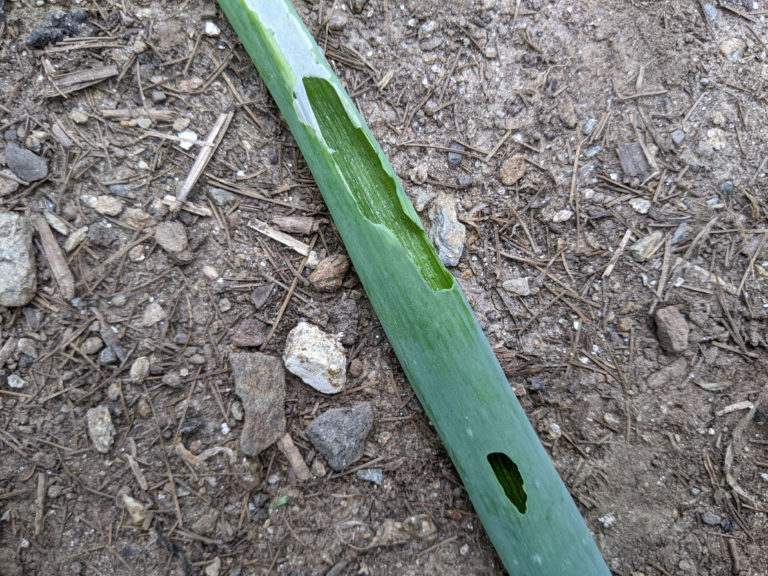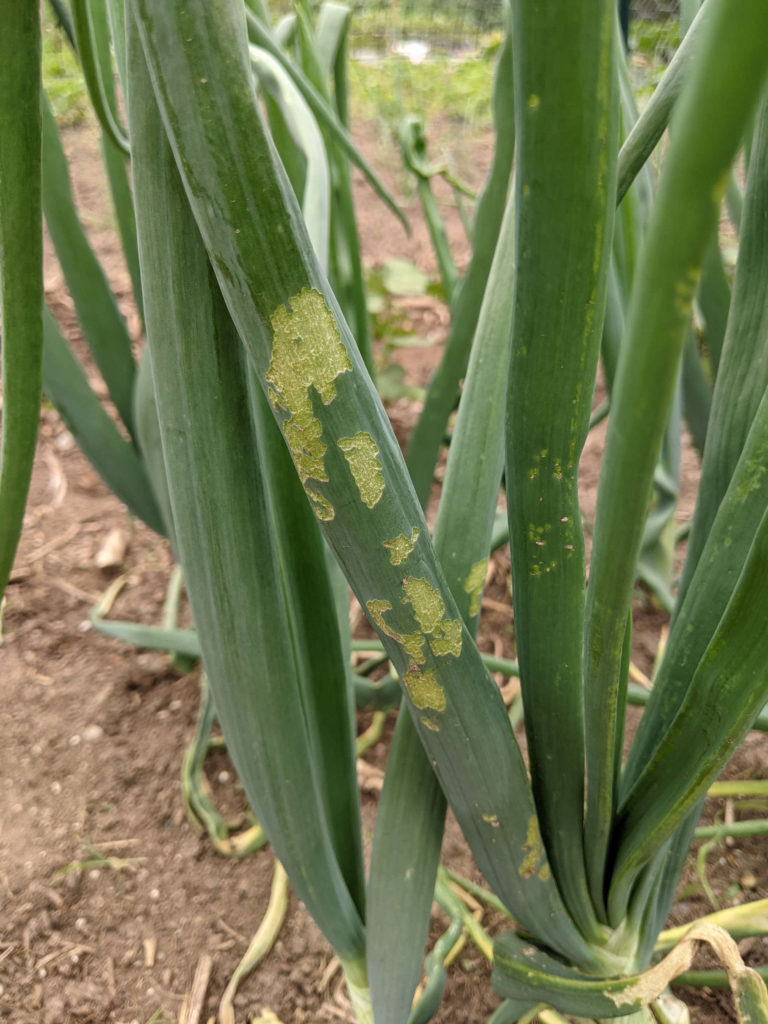Onions
Selection and Planting
Onion Varieties
Onions come in three main variety categories: long day, short day, and intermediate day. Each category refers to the amount of daylight required for the plant to form bulbs. At Rose Tree Garden, you should primarily focus on long day onions but may also consider intermediate day if you have a specific variety you’d like to try. When looking for onions, choose varieties that initiate bulb forming at latitudes between 37 and 47 degrees with daylight between 14 and 16 hours.
When looking at long day onions, you can find a wide variety of types including red, yellow, and white. You should choose the color that best fits with the onions you typically consume. Within your favorite color, choose one that is suited for spring planting and matures between 100 and 115 days.
Along with the typical bulb varieties of onions are bunching onions, otherwise known as green onions. These are onion varieties that have been bred to not form bulbs but instead send energy into its leaves.
Planting
Onions in Rose Tree Garden can be grown from either transplants or onion sets. Transplants are onion plants that have been grown up to a small size, removed from the ground and then transplanted into your garden. Onion sets are mini onions that are buried 1 inch deep. We recommend using onion transplants. Onion sets may result in bulbs that produce flowers since onions are biennial (produce seed after its second year). Onion plants that have been transplanted do not go to seed.
No matter what type of onion you choose, you should make sure to purchase them from reputable garden centers or purchase them from seed suppliers in the northeast. Note: do not plant onion seeds directly into the garden.
Onion transplants should be spaced 4 inches apart in rows 12 inches apart. You can also plant them closer with closer row spacing, but the size of each onion may be smaller.
Growing Onions
Pests
Onions are affected by a number of insects including the following
- Caterpillars
- Onion thrips
Caterpillars consume large amounts of the onion leaves, chewing large holes in the leaves
Unlike with most caterpillars, the saltmarsh caterpillar consumes the outer later of the onion leaves
Diseases
Onion plants can be susceptible to various kinds of rot. While none have been seen at Rose Tree Garden, you should still use good cultural control practices. These include using healthy plants, practicing crop rotation, and not allowing the soil to get saturated with water.
Watering
Onions do not generate robust root systems and therefore require constant soil moisture. Maintain higher levels of moisture in the soil through the use of mulch and regular watering. Monitor both the soil moisture and rainfall using the Rose Tree Garden Weather Data and water your plants when soil moisture decreases or the garden has not received at least 1″ of rainfall in the past week.
Weed Control
Keep area around onion plants clear of weeds to prevent competition. Use of a garden hoe may damage the onions, so hand pulling weeds is ideal. Reduce the weed pressure by following our Weed Prevention suggestions.
Harvesting
Onions should be harvested when about half of the tops are starting to fall over. Crimp the tops of the remaining bulbs so that all of the tops are laying on the ground. Each onion can then be pulled from the ground.
Storage
In order to increase the shelf life of your onions, you need to cure them. This entails placing them in a warm (greater than 80 degrees F), well-ventilated room for 2 weeks until the outer layers of the onions have dried. Regularly check the onions for excessive moisture which will result in rotting.
After curing, remove the tops and roots and store your onions below 40 degrees F and at 65% humidity.



